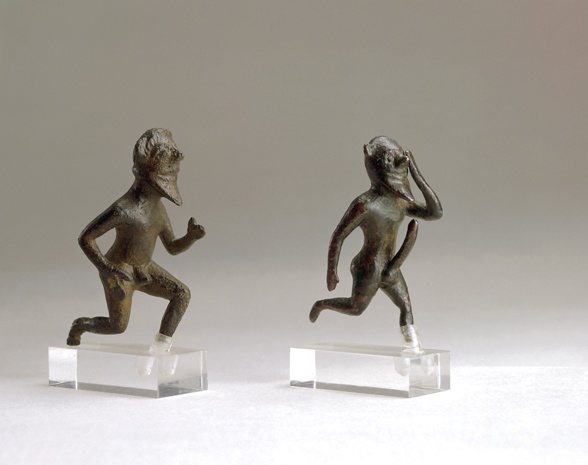
Bronze
H: 5.7 cm
Allegedly from the Alpheios Valley (Elis)
Elean workshop
c. 525 B.C.
Solid-cast by the lost wax process with very little working in the cold.
Condition: the once originally smooth surface considerably eroded to the detriment of most of the details. Tips of fingers of left hand missing, as also toes of right foot and left foot and ankle.
Greenish black patina with earth deposits over the eroded parts.
Full of life and with his broad smile, this satyr runs in the archaic fashion, one knee to the ground. He has no tail and human feet, particular features of Laconian satyrs [1] in the 6th century B.C. This woodland spirit, characterized by his big eyes, upturned pointed nose, large mouth and goatee, was presumably part of
a group.
Somewhat earlier in date than the following companion piece, he is probably from a local workshop under Laconian influence.
On view: Antikenmuseum, Basel: 1967-1968
Exhibited and Published:
Art Antique, cat. no. 178, ill.
Hommes et Dieux, cat. no. 54, pp. 107, 108 col. pl.
Published:
Pipili, M.: Laconian Iconography of the Sixth Century B.C. (Oxford, 1987), cat. no. 185, pp. 117, 67.
Mentioned:
Herfort-Koch, M.: Archaische Bronzeplastik Lakoniens, Boreas Beiheft 4, 1986, p. 61 n. 214.
1 Pipili, M.: Laconian Iconography of the Sixth Century B.C., p. 67.